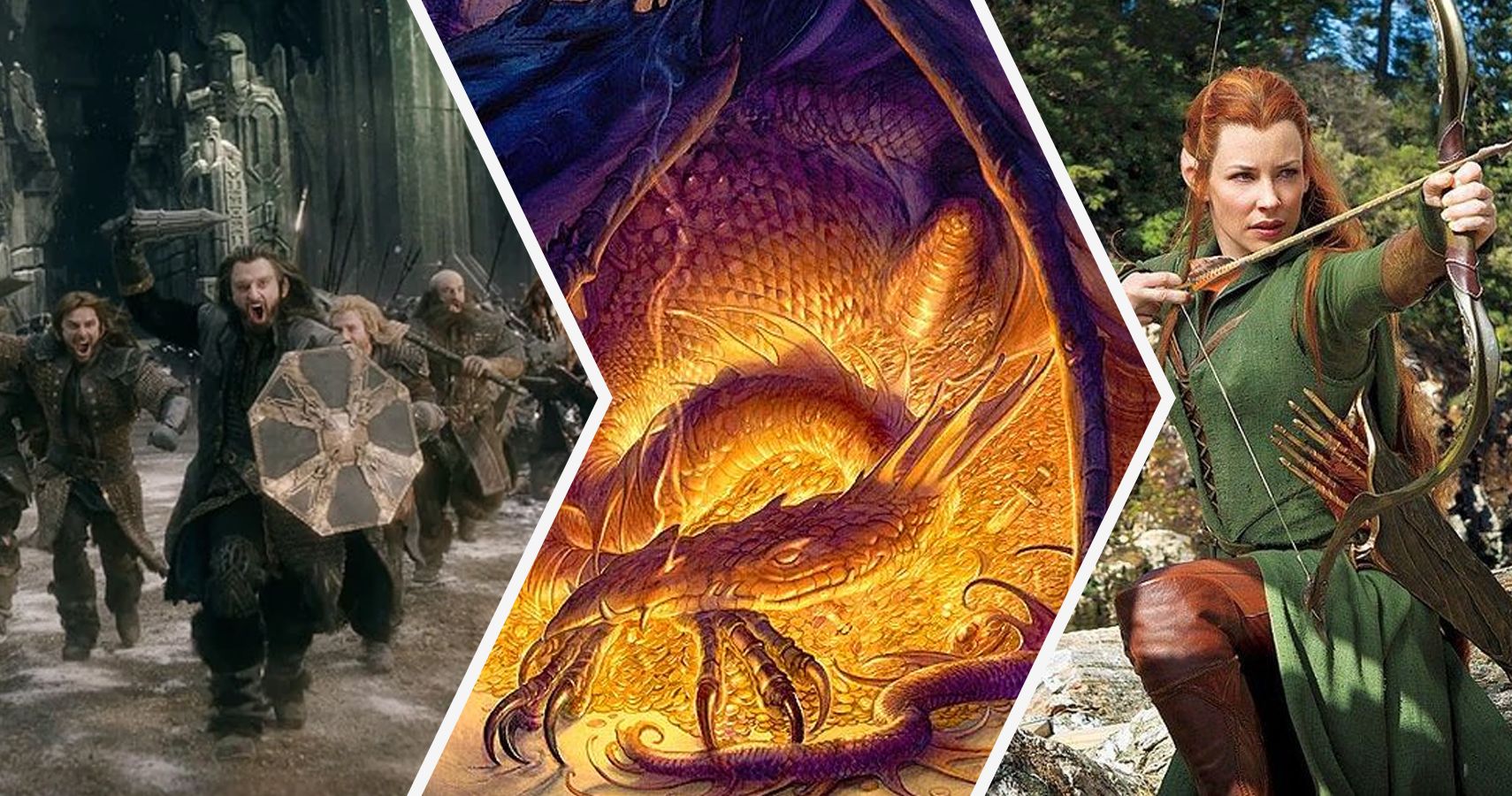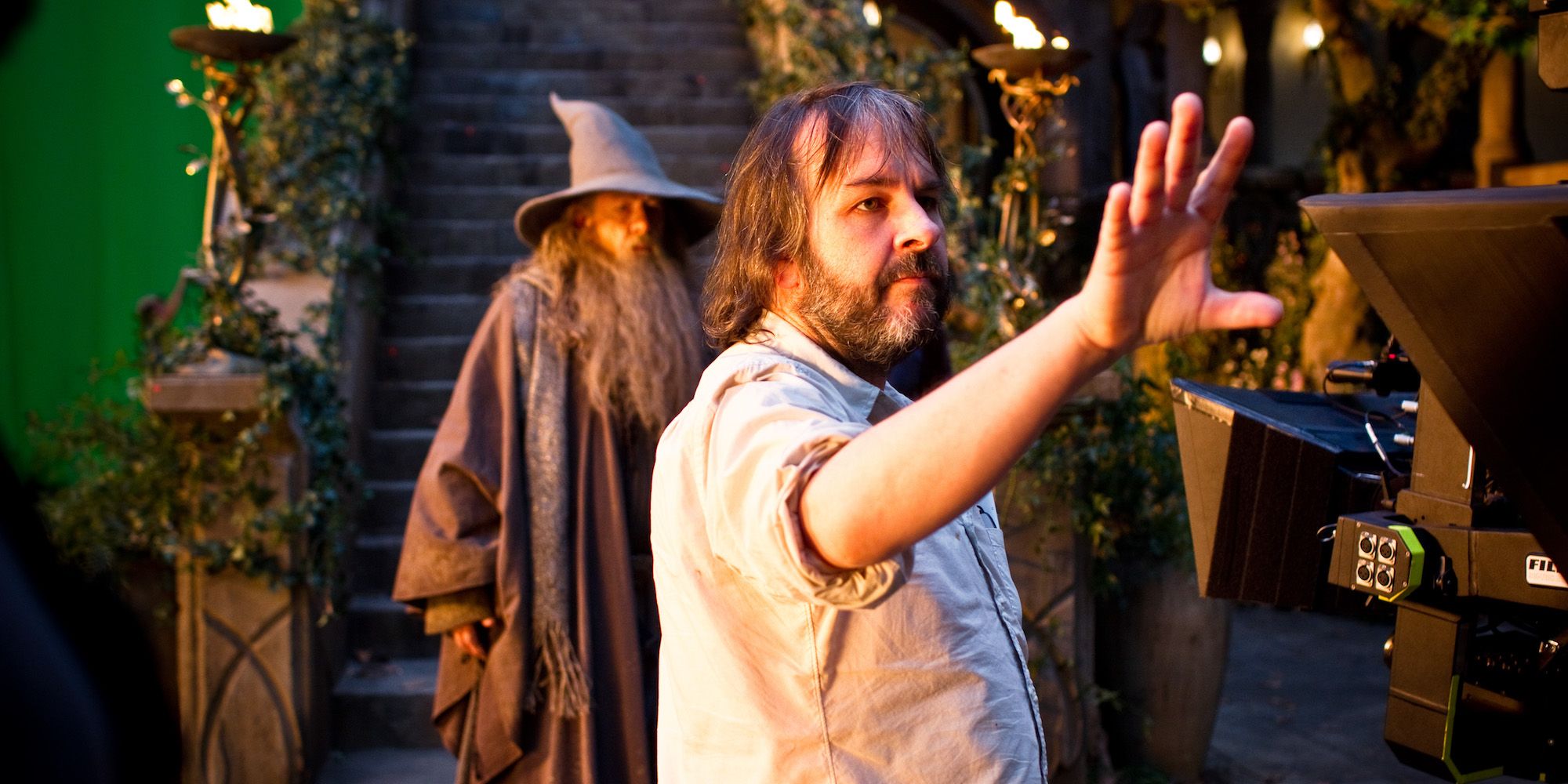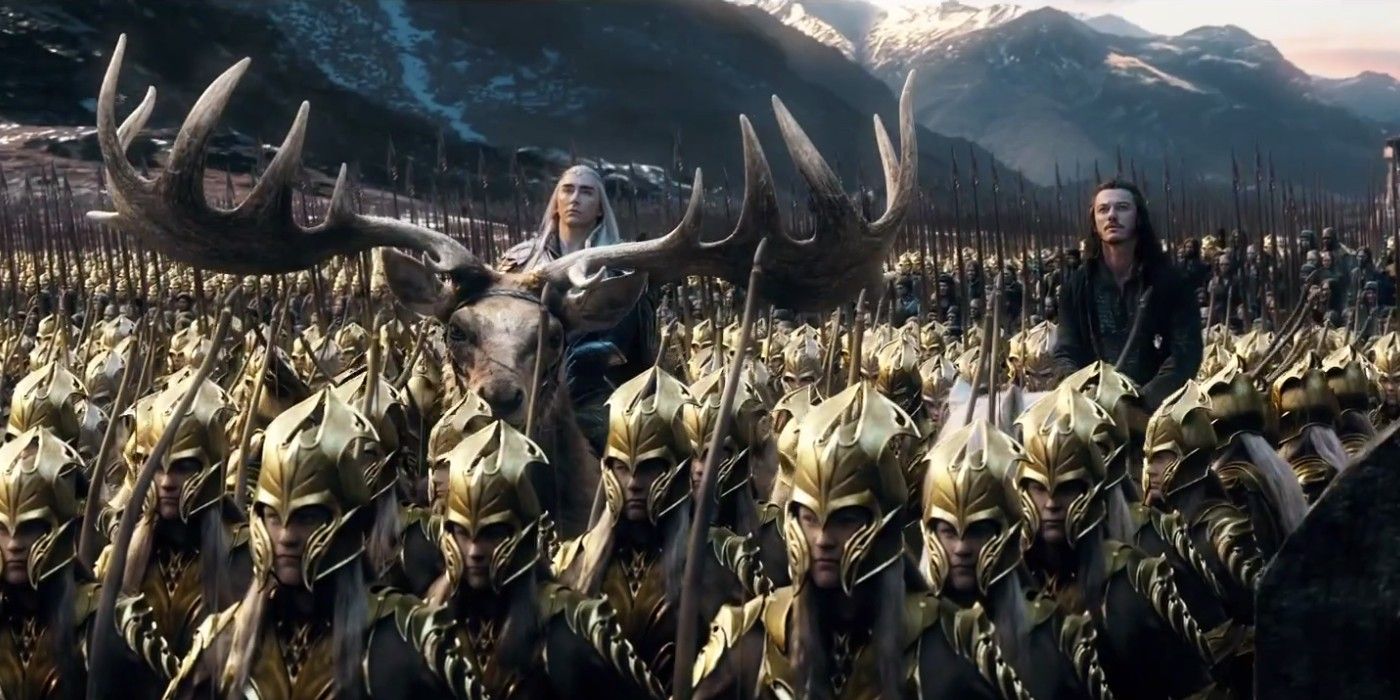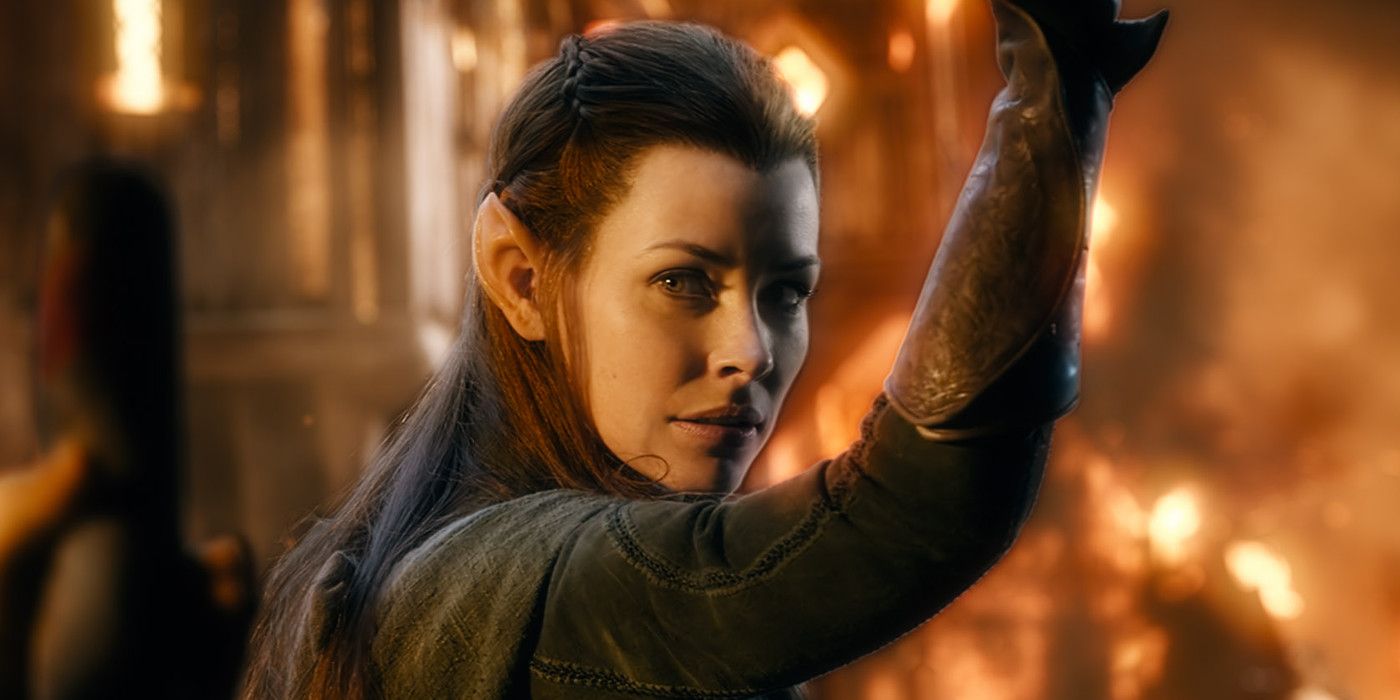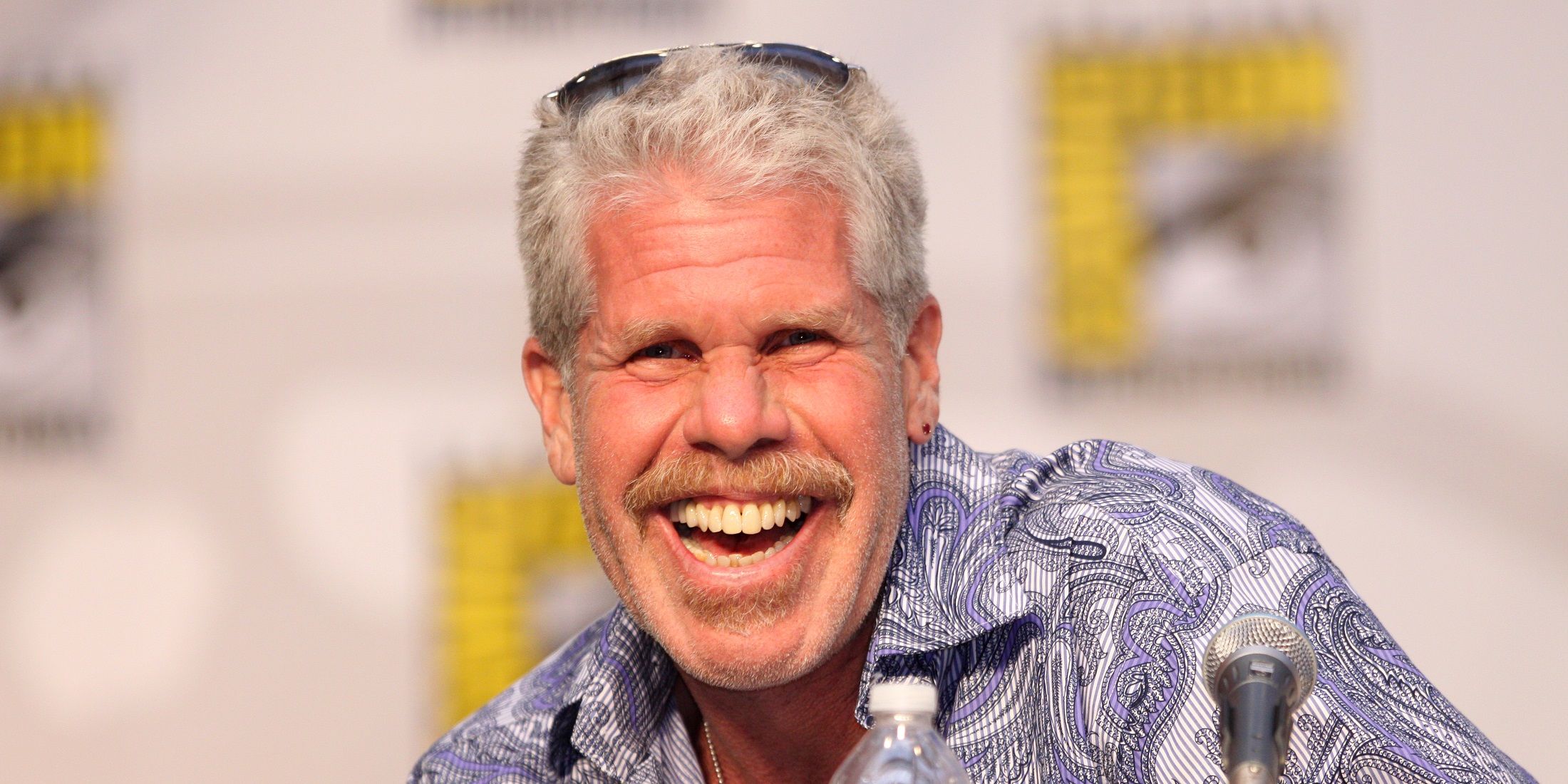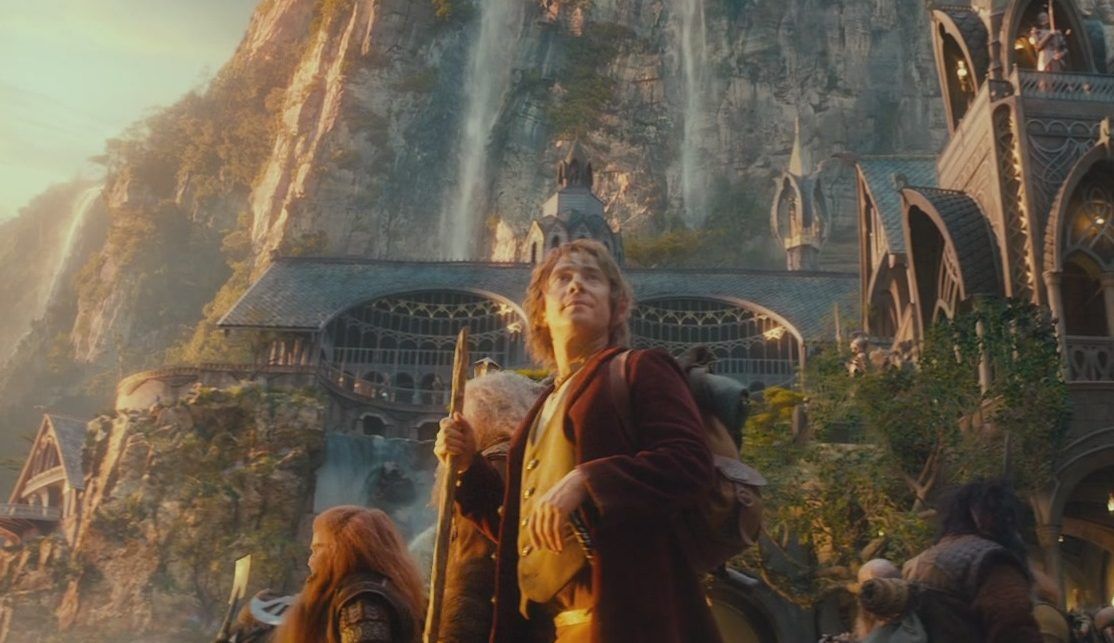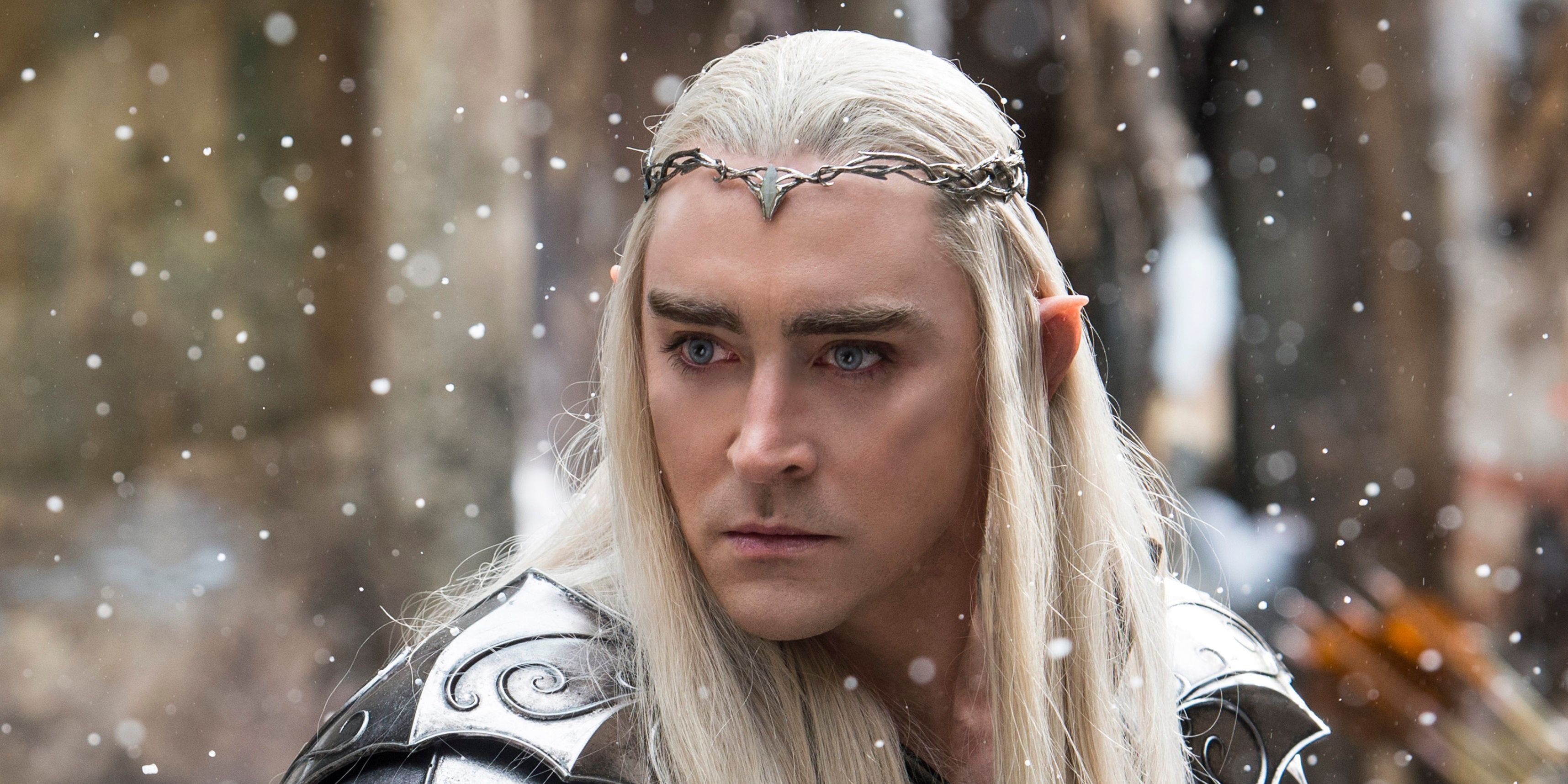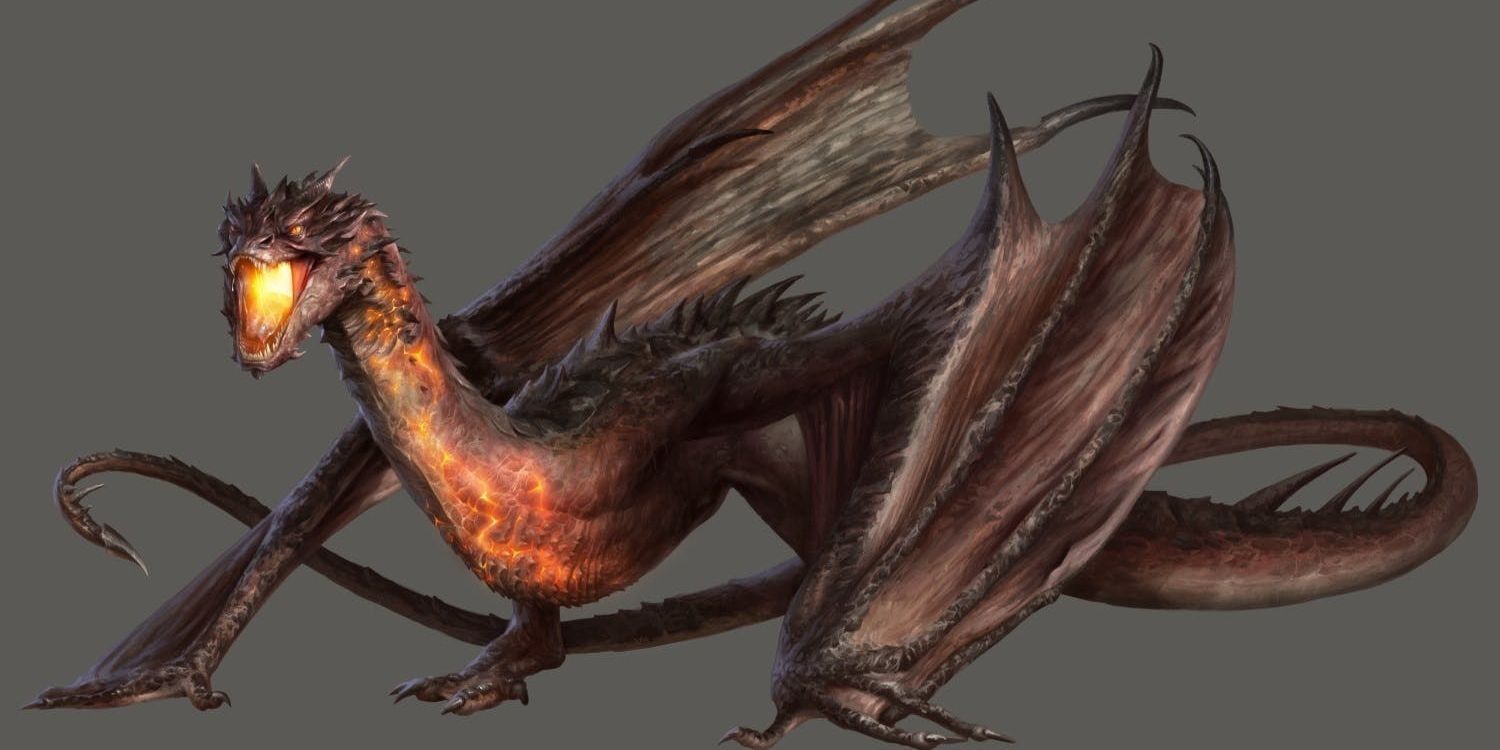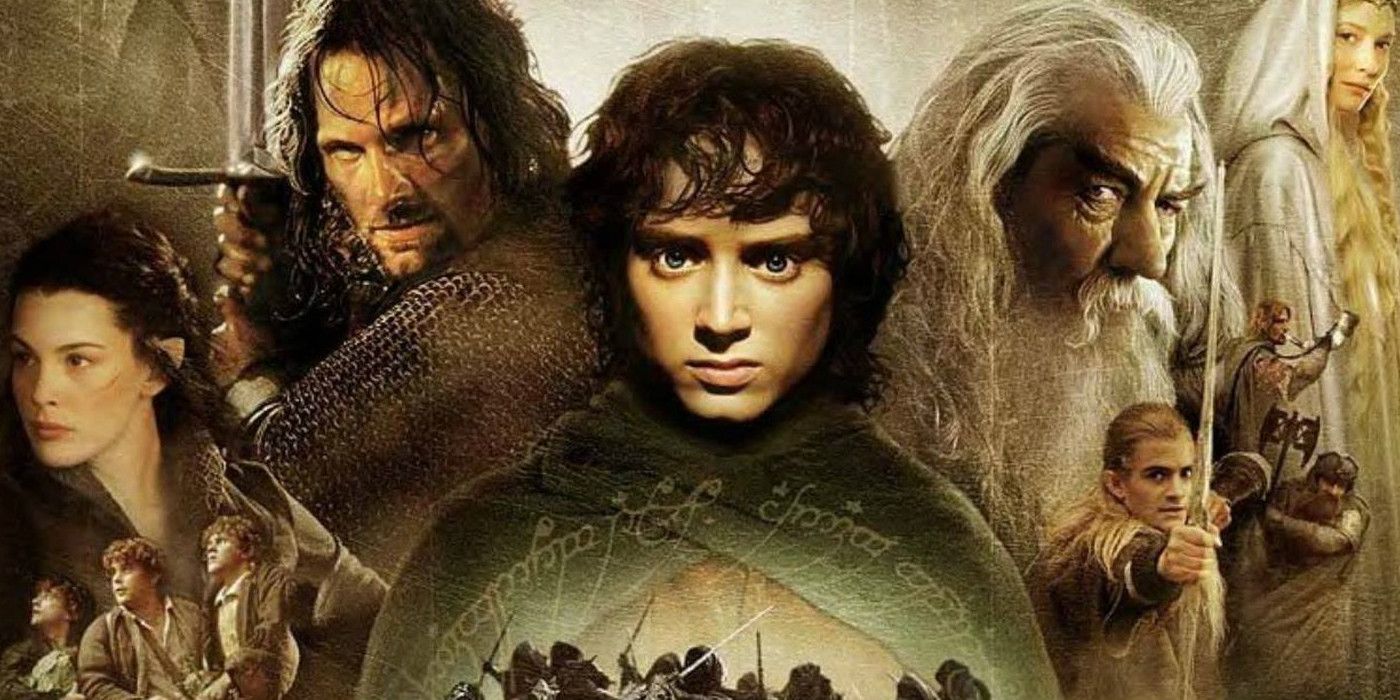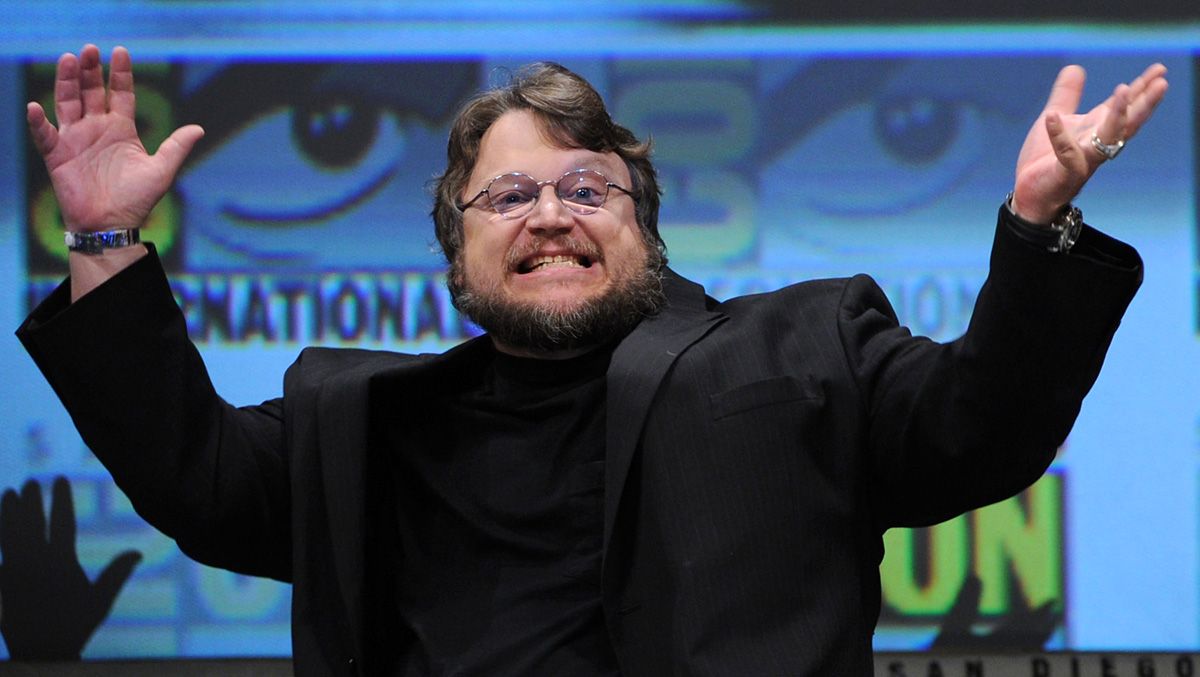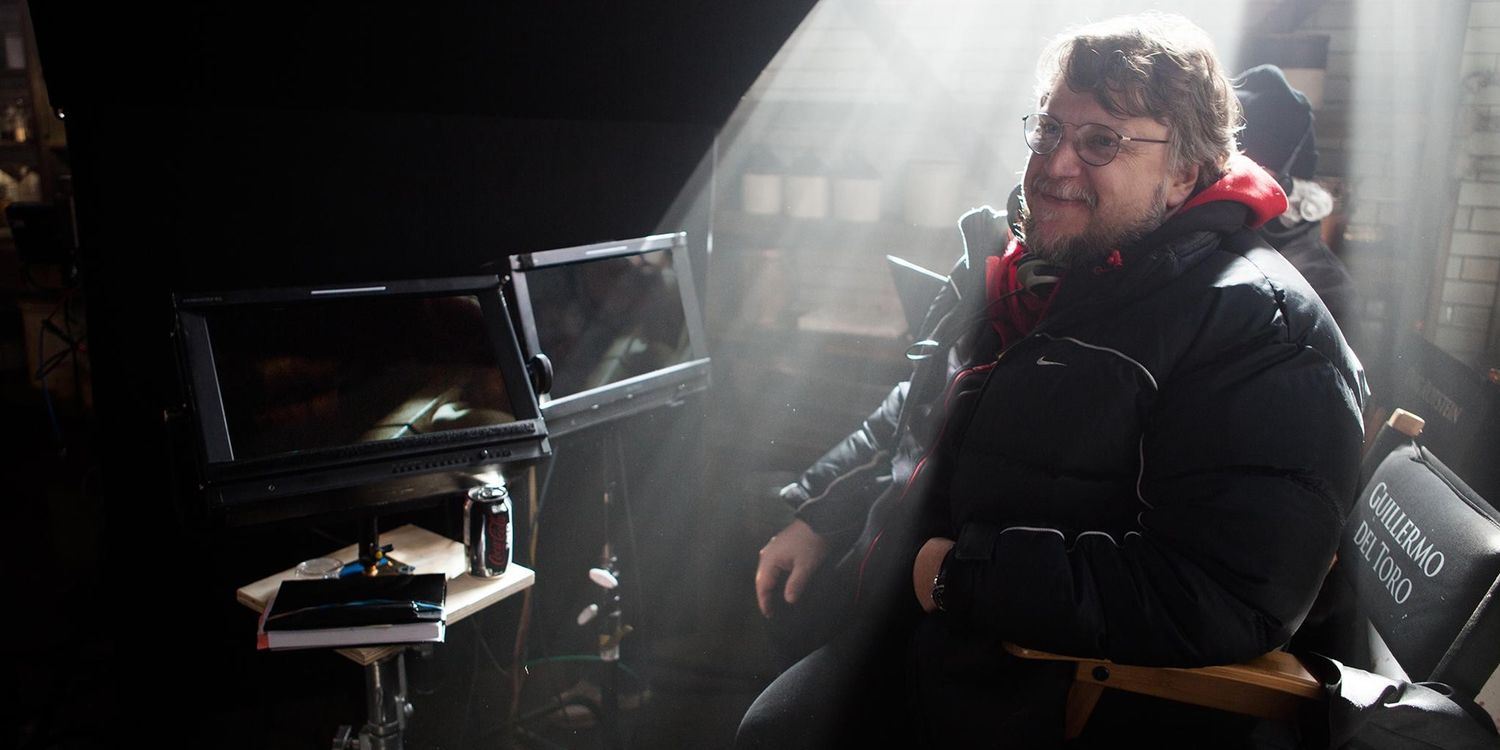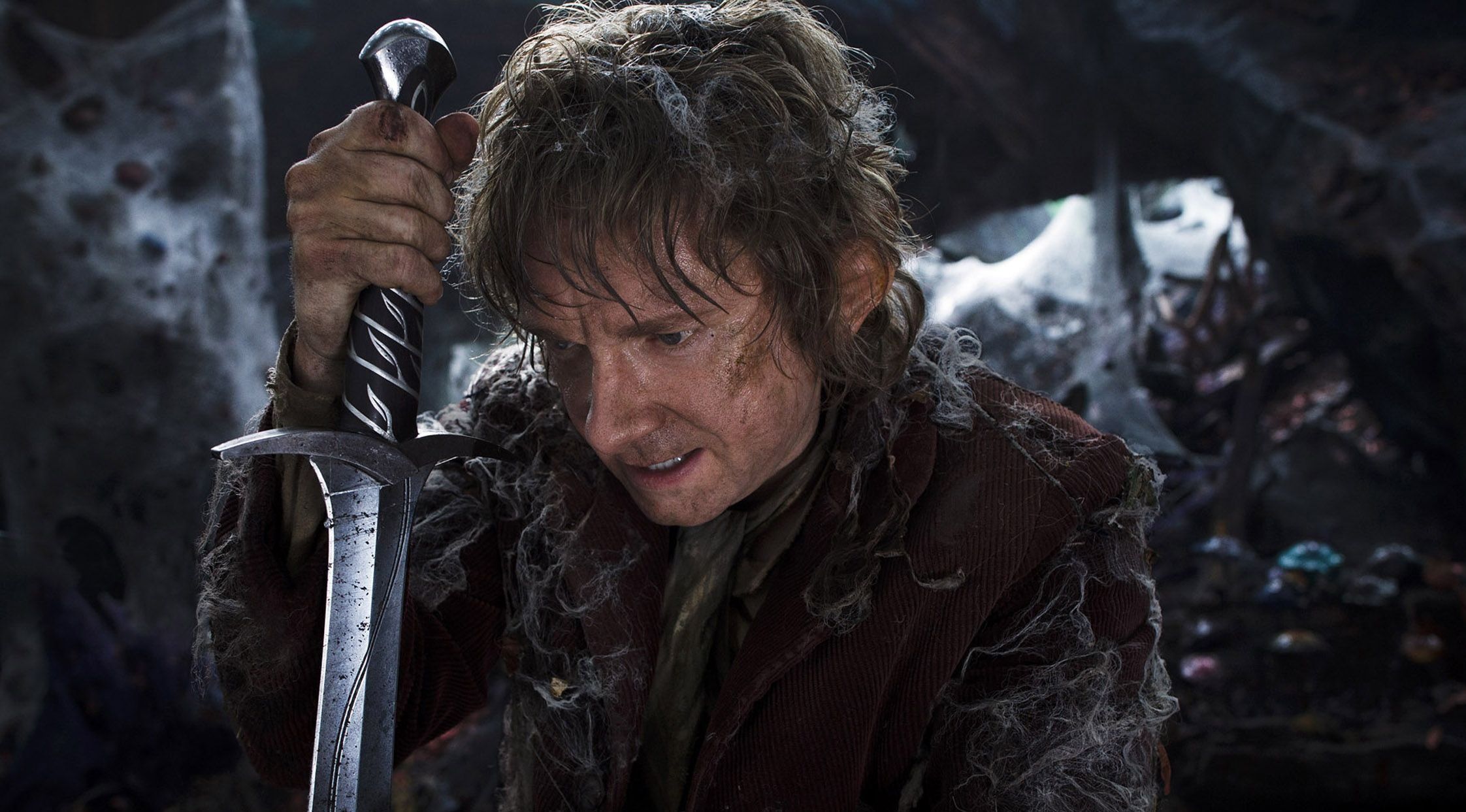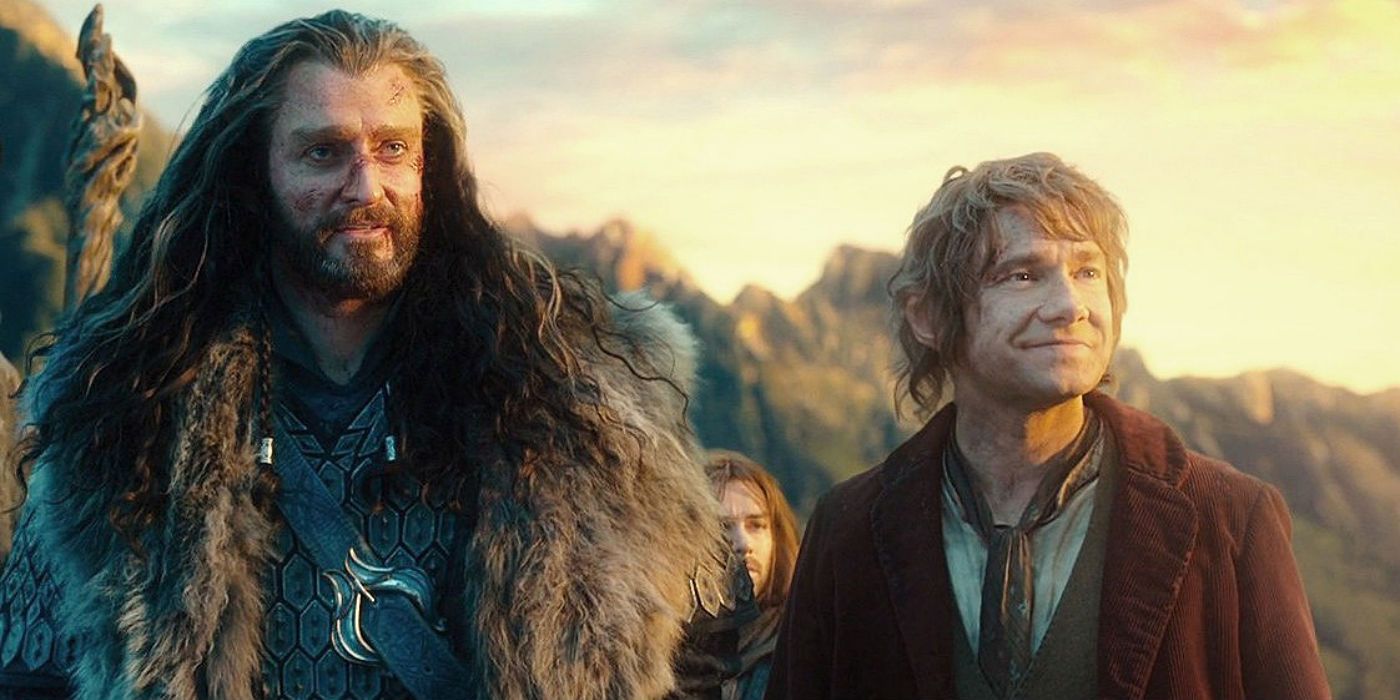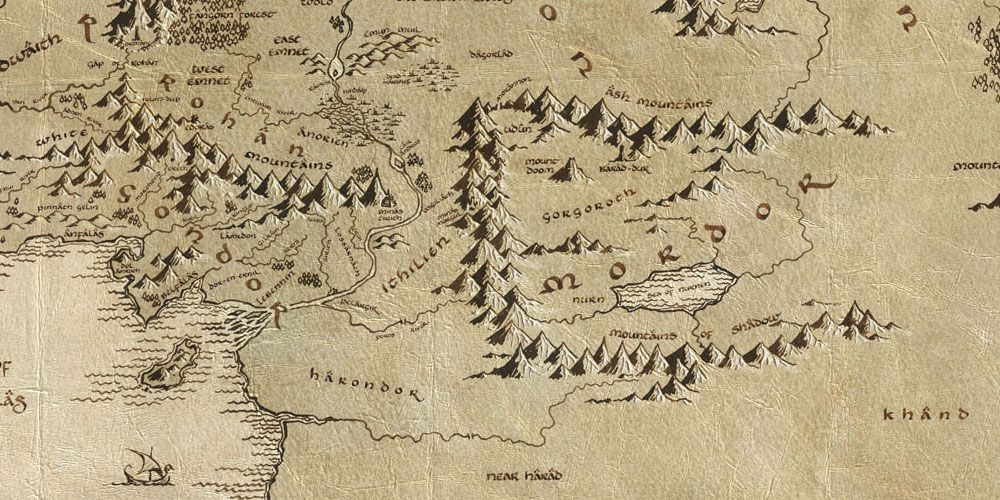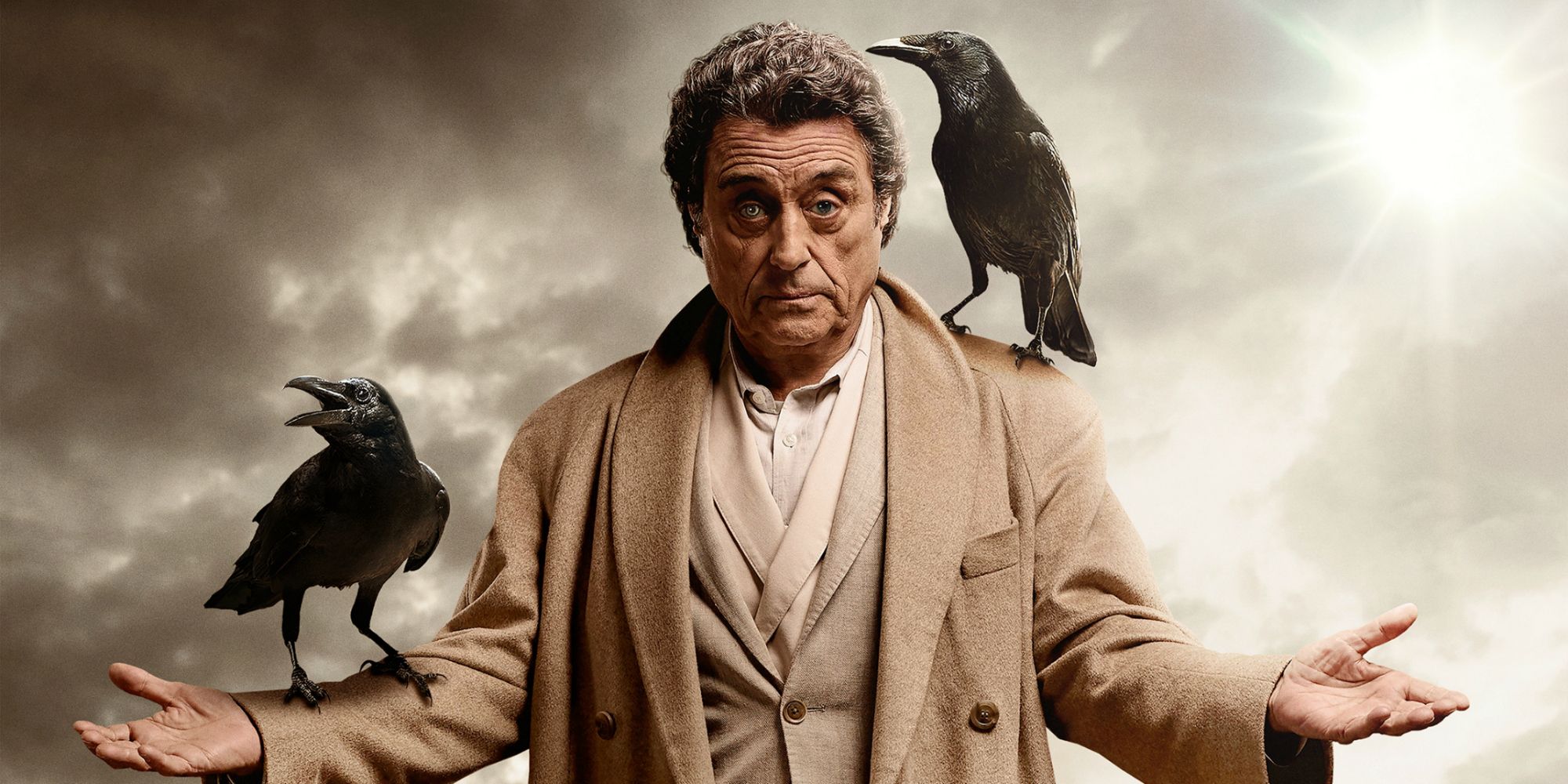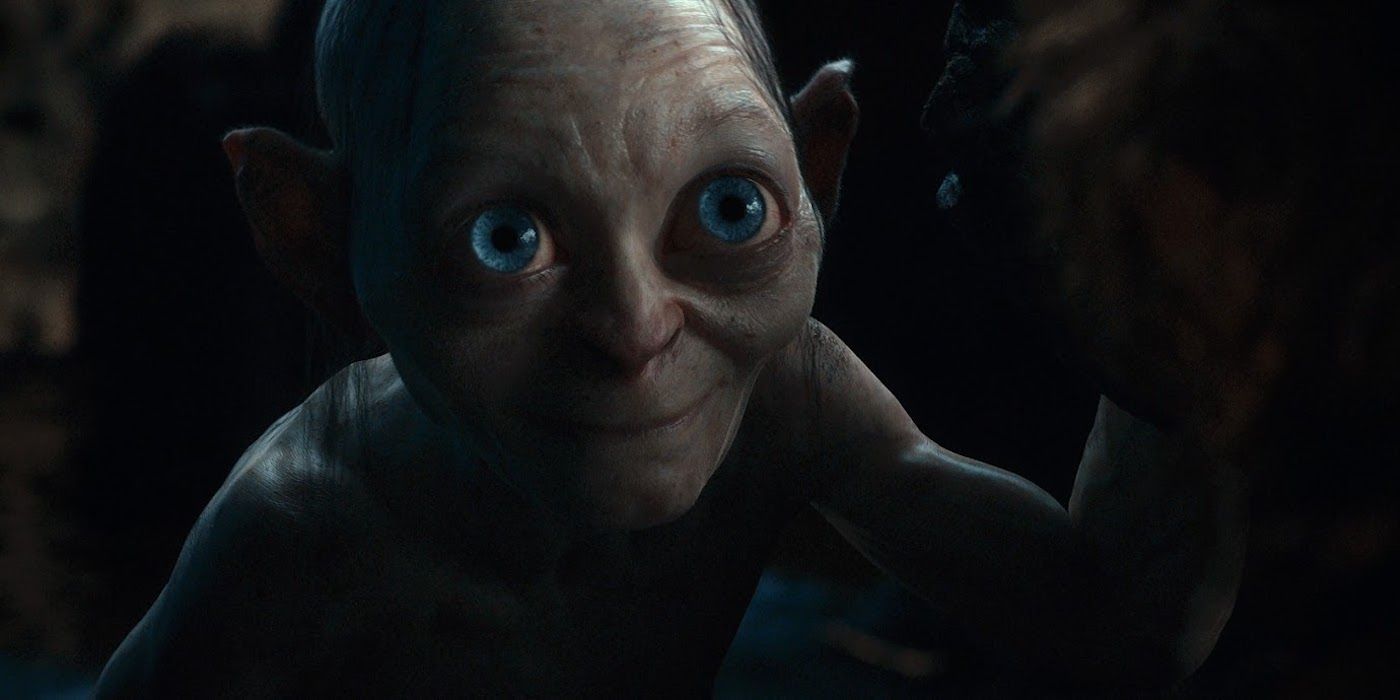Although it was disappointing to hear that Guillermo del Toro exited his planned Hobbit movies, the prospect of Peter Jackson returning to Middle-earth 9 years after the completion of his wonderful Lord of The Rings trilogy was still something to be excited about.
Cut to 2018 and Jackson’s Hobbit trilogy is considered, well… something of a disappointment. The Hobbit trilogy is simultaneously too much-- and not enough-- like butter scraped over too much bread.
Though these movies are not without their moments, the emotional core is sadly dim among the digital fury and artificially inflated grandeur that was added for fan-service.
A combination of greed on the studios’ part (three epic sized movies based on a small novel) and a beleaguered Peter Jackson doomed this trilogy from the beginning.
It makes one yearn even more for Guillermo del Toro’s adaptation. Having just won an Oscar for Best Director and Best Picture for his original and modestly budgeted fantasy movie The Shape of Water, it’s difficult not to wonder what might have been with del Toro at the helm.
Maybe it wouldn’t be as fondly remembered as The Lord of the Rings, but, judging by his plans, it would’ve been different enough so as to not merely amount to a lesser The Lord of the Rings.
Here are the 15 Things Even True Fans Didn't Know About Del Toro's Canceled Hobbit Movies.
Del Toro’s Pre-Production Ate Up Peter Jackson’s Prep
Because the studios had already sunk a year and a half worth of money into Guillermo del Toro’s pre-production, when Peter Jackson stepped in to steer this behemoth he had basically zero prep time.
Consider that for The Lord of the Rings, Jackson was given three years of pre-production to get all of his ducks in a row. It’s so ill-advised that he was given no time to prepare for three movies of equally epic magnitude that it borders on irresponsible.
Some stunning behind-the-scenes features on The Battle of the Five Armies attests to the hurried and shambled nature of the production.
When it came to the epic five armies battle, the actors were basically waving around their sticks in a green room, with little idea of what they were supposed to be doing. Jackson himself admits in the video, “I had no idea what the hell I was doing.”
The Battle of the Five Armies Would’ve Been Far More Faithful to the Books
It’s somewhat comical that the tagline for the third Hobbit movie, The Battle of the Five Armies, was “The defining chapter.”
The titular battle only takes up three pages in the book, with 6,000 or so combatants. In the movie, it was stretched out to roughly an hour of screen time and 100,000 or more fighters. A clear case as any of stretching out material beyond its reasonable limits.
Though it can’t be known exactly where del Toro would’ve deviated from the source material to carve out his own material, he did say that he intended to keep faithful to The Hobbit’s version of the terrible and calamitous battle.
At the very least, Legolas’ involvement would’ve been minimal or non-existent and there’d be not much, if any, chances of the battle going on and on.
Del Toro Championed A She-Elf
You might think that the creation of Tauriel, a warrior female Elf, would have been courtesy of Peter Jackson’s or the studio’s hands.
However, as it turns out, del Toro was concerned at the lack of females in the narrative and was a strong advocate for a capable female character who actively participated in the story.
Co-writer Philippa Boyens said, “He was there when we decided on the female character. And he was very much a strong supporter of that.”
As for the love triangle that ended up taking much of Tauriel’s time? That was a studio mandate that there be one during the reshoots in 2012.
Evangeline Lilly diplomatically referred to this storyline as “not really Tolkien” and “not the most shining parts of the film.”
Ron Pearlman Was Considered For A Role
Ron Pearlman has collaborated with del Toro on a number of big-budget fantasy movie, most famously the Hellboy movies and Pacific Rim.
Del Toro was going to get him on board with this fantasy epic too-- not as the dreaded Smaug the Magnificent, but as Beorn, a warrior who could turn into a bear at will. It's likely that Pearlman would’ve knocked this particular role out of the park, too.
In an interview with CBR, Pearlman seemed more than enthusiastic at the prospect:
“Del Toro is the coolest guy I know, without equivocation. It’s a state of grace being on a Guillermo set. I think he had written the role of Beorn the bear-man for me. It’s going to be somebody else now. It’s all right.”
The Movies Would Have Had A Very Different Tone
Despite the structure of The Hobbit tale being all together more child-friendly and less epic than the Lord of the Rings novels, Peter Jackson’s Hobbit trilogy hews perhaps too closely to the Lord of the Rings’ tone: grand, grave, perilous, occasionally heart-warming.
Del Toro had a more distinctive and focused tone in mind; more of a fairy tale. He planned to specifically echo the “loss of innocence” that England experienced after WWI, tracing such a passage visually, thematically and texturally, thus setting the stage for Jackson’s darker and more grandiose LOTR trilogy.
There's no doubt it would have had its own kind of mythic resonance without merely feeling like an overlong and padded extension of the LOTR trilogy.
The idea was for it to be more of a companion piece and less of a straightforward prequel.
The Movies Would Have Been Color-Coded To Represent Bilbo's Journey
Many movie fans are familiar with Guillermo del Toro’s film aesthetic: ornate, obsessively detailed, an operatic world where the mundane and the miraculous co-exist.
Peter Jackson’s Middle-earth used its New Zealand setting to brilliant effect, creating a world that you can completely believe in.
Del Toro planned to go a different and riskier way with his setting, using a digital sky replacement to grant his movies more of a painterly effect. His two movies were also colour-coded to adhere closely to Tolkien’s description of the seasons during Bilbo’s journey.
“There’s a green passage, a blue passage, a crimson passage, a golden passage,” del Toro said. He would’ve mixed and matched these colours more and more as the story would get progressively more sombre.
The controversial Smaug design
Del Toro described the uniqueness of his Smaug design in rather stark terms: “Eight-hundred years of designing dragons, going back to China, and no one has done this!”
Although del Toro couldn’t spill all the secrets because he was under contract and Smaug is not his intellectual property, a few things can be gleaned from some interviews.
Firstly, he admitted that was some discomfort and tension over his design: “I know this was something that was not popular."
Secondly, it would’ve resembled more of a serpent than the traditional image of a dragon, including a “slithery softness across its belly.”
However, what differentiates it most from Jackson’s design, is that his Smaug’s eyes were going to be “sculpturally very hidden,” adding a layer of tension when Bilbo steals from the monster’s treasure.
Del Toro Wanted Every Actor From The Lord Of The Rings To Reprise Their Roles
Peter Jackson carried over a few key characters from LOTR to the Hobbit who weren’t present in the text – notably Saruman, Galadriel, and Legolas, much to the consternation of Tolkien purists.
Surprisingly, del Toro wanted every actor to reprise their roles from the original trilogy.
“Unequivocally, every actor that originated a role in the Trilogy will be asked to participate and reprise it. If health or availability or willingness become obstacles, only then will recasting be considered,” he stated.
It's interesting that del Toro was adamant about getting the original and considerably large cast back together, if only for the fact that he seemed to want to differentiate himself from Jackson’s trilogy and that he admitted he wasn’t madly in love with the Lord of the Rings novels.
Del Toro Spent Two Years Prepping for the Hobbit
In May 2010, Guillermo del Toro announced that he would no longer be directing The Hobbit. He officially signed on to the project from January 2008.
The official reasoning cited for del Toro exiting the endeavour was that the time required for crafting movies of such magnitude ballooned and ballooned until it cut into the time required for making other films.
The two years of pre-production meant that all the costumes, the sets, and planned action sequences were primed and ready to go.
In an interview with BBC One, del Toro expressed great sorrow when asked about how it felt to leave the project after two years: “I feel terrible about it. It’s getting easier to talk about it. But, essentially, it’s like you’ve been recently widowed and everybody is asking you how exactly your wife died. It’s pretty morbid.”
The Delayed Greenlight Was Due To Financial Issues
The reason for The Hobbit project suffering setback after setback was likely due to MGM’s dire financial situation at the time.
So much so that even in 2010, with the scripts and sets and everything else ready to go, the project was still yet to receive the official greenlight, which would be necessary for calculating the budget.
Although Metro-Goldwyn-Mayer was a hit-maker in its heyday, producing such classics as The Wizard of Oz and Ben-Hur, the company was in a death spiral in 2010, teetering on the edge of bankruptcy.
Because MGM held a large portion of the rights, production could not get going until their financial issues were straightened out. Unfortunately, this took so much time that del Toro had to bow out.
There were no Plans For a 3D version
Guillermo Del Toro had no plans to shoot The Hobbit in 3D when he was conceiving the project back in 2008/09.
However, a wrecker of worlds called Avatar changed the game at the tail end of 2009. Its innovative use of 3D special effects no doubt contributed to its gargantuan, yet-to-be-topped financial success.
Perhaps sensing an opportunity for further innovation, Jackson, ever the ambitious cinematic pioneer, sought to top that with 3D 48fps effects. The high frame rate effects were wholly unsettling and distracting.
They were so pristine and smooth that it laid bare the artifice required to make such fantastical movies. Ironically though, the goal of the high frame rate effect was to make the world feel even more immersive.
There would have been a stronger focus on the dwarves
Although the two actors who portray Biblo Baggins and Thorin Oakenshield give it their all (Martin Freeman and Richard Armitage, respectively), The Hobbit trilogy never focused all that much on the development of their deep friendship.
There were a few good scenes here and there, but perhaps not a sufficient amount for what totals a near 9-hour epic.
Del Toro meant for much of the drama and emotion of the last third of The Hobbit to flow from the dwarves and for each of the 13 to be distinguishable and affecting as possible.
For anyone familiar with The Battle of the Five Armies, it’s plain to see that their story was short-changed – or at least emotionally muted – in order to make way for the LOTR elements.
Location Work & Practical Effects Would’ve Been Favoured
The Hobbit trilogy and the Star Wars prequel trilogy share one unflattering similarity: an over-reliance on CGI spectacle.
Even Lord of the Rings star Viggo Mortensen admitted that Jackson’s preoccupation with new technology may have gotten a little in the way by time The Two Towers and Return of the King were filming – by The Hobbit it was “that to the power of 10.”
From the outset, del Toro was adamant to movie mainly in sets and real-world locations. For the creatures, there was going to be a mix of animatronics and CGI.
“Imagine a physical creature with a radio-controlled muscle/facial system” and with only few CGI embellishments when absolutely required. He sought for a balance in which the weakness of either tool – be it CG or prosthetics – were never apparent.
Del Toro Wanted Ian McShane To Play A Dwarf
English actor Ian McShane is no stranger to epic fantasy, having played roles in Pirates of the Caribbean, American Gods, and Game of Thrones.
Evidently, del Toro was a big fan of his, as he wanted him to have the role of Dwarf chieftain Thorin Oakenshield, considering him to be “the perfect dwarf.”
It's doubtless that del Toro’s instincts were right and that he was onto something there. McShane has the right mixture of coarseness and innate nobility needed for such a role.
Funnily enough, McShane eventually was cast as a dwarf – albeit a much less memorable dwarf -- for the 2012 fantasy blockbuster Snow White and the Huntsman.
However, the actor regarded the moie as a massive disappointment: “the less said about it the better,” he said.
Del Toro’s Favourite Sequence Was The Contest Between Bilbo And Gollum
Del Toro’s favourite sequence from The Hobbit is the chapter called "Riddles in the Dark," wherein Bilbo Baggins and Gollum engage in a deadly contest of wits.
If Bilbo wins, Gollum must show him the way out of the dark tunnel. If Gollum wins, Bilbo becomes Gollum’s dinner. Del Toro called it, “The most beautiful scene in the book.”
Del Toro wished for the sequence to be extremely frightening and tonally distinctive from Peter Jackson’s particular sense of the macabre and gross weirdness.
Although it’s sad that we’ll never get to see what kind of oddities and creepy strangeness that del Toro would’ve imbued this sequence with, Peter Jackson’s version of the tense sequence nevertheless remains a highlight of the Hobbit trilogy-- creepy and darkly comedic in equal measure.
---
Can you think of any other interesting facts about del Toro's canceled Hobbit movies? Comment and let us know!

